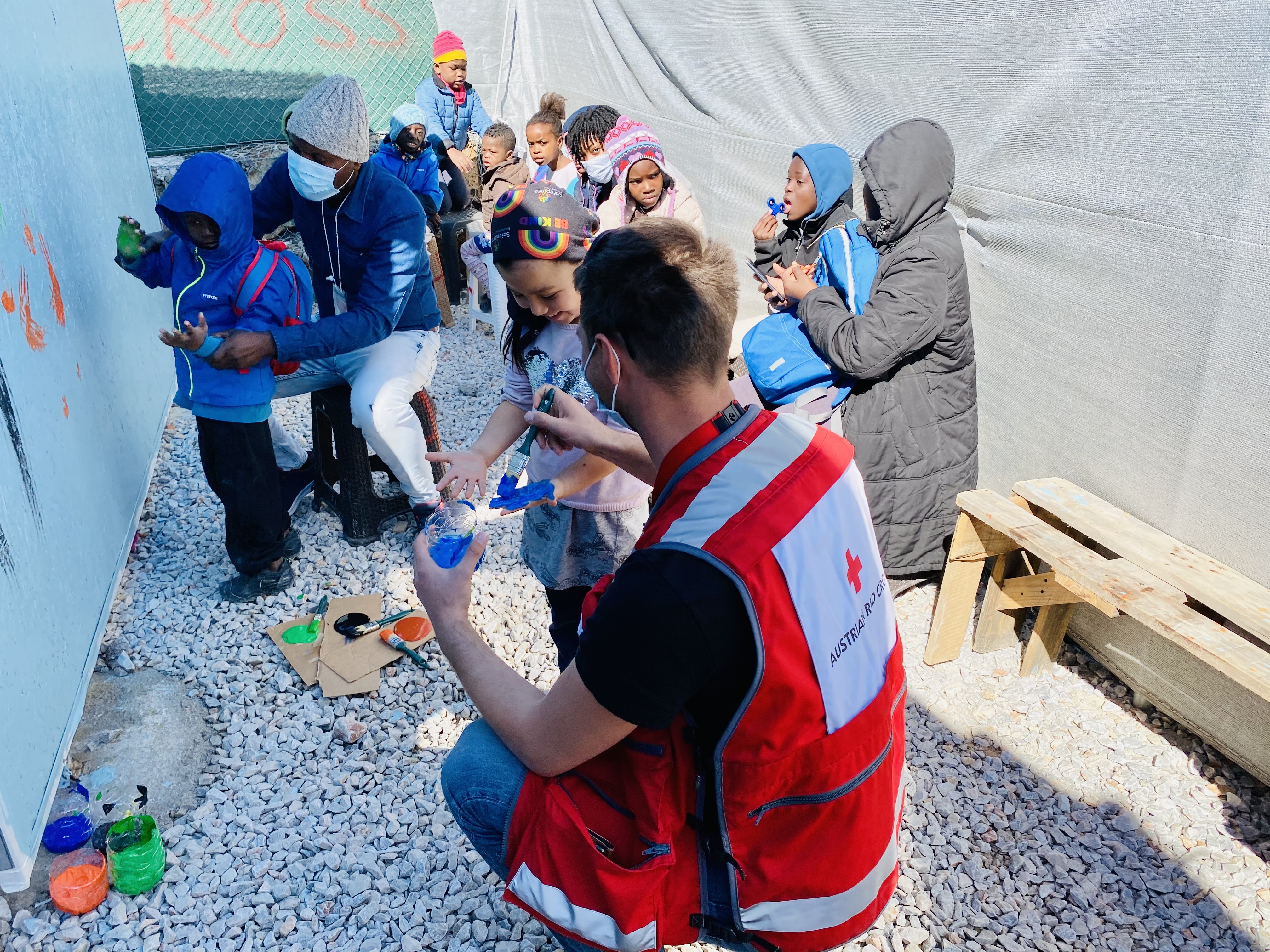Following a fire at the Moria refugee camp on Lesbos, 13,000 refugees from a variety of countries, including the Democratic Republic of Congo, Afghanistan and Syria, were relocated to a rocky site at Kara Tepe. The camp was overcrowded; the poor living conditions were particularly challenging for people with chronic illnesses and those with disabilities. The safety of women and children travelling alone was a critical concern. There was significant tension and conflict between different groups and nationalities within the camp and a high prevalence of many WASH-related diseases, such as acute watery and bloody diarrhoea and scabies, as well as COVID-19.

Pre-conditions and Enabling Factors
There were numerous technical barriers and socio-cultural challenges in providing WASH infrastructure to meet the needs of the different groups. In winter the temperature could be as low as 7° centigrade. The terrain was rocky with no piped water supply or electricity so, initially, water was trucked to the camp and chemical toilets were installed by the camp authorities. However, the toilets were not used and many practised open defecation, with some women feeling compelled to defecate inside their tents. Subsequently, gender segregated shower blocks were designed with the help of community members. Special attention was paid to menstrual hygiene management and privacy. Each block included a larger shower area with overhead showers for those with special needs, such as people with disabilities or parents with young children. Social aspects were an important enabling factor - the shower blocks became an important place for interaction where women could meet friends and talk.
Community Engagement and Participation
Hygiene promotion (HP) teams were created, made up of Hellenic Red Cross volunteers drawn from the camp community and representing all their nationalities. The teams designed their own HP and behaviour change campaigns and guided the design of the WASH facilities. A strong emphasis was placed on participation and enabling the community to generate their own solutions to problems. For example, feedback indicated that men also wanted baby showering facilities because they too were caretakers of the children. By contrast, a lack of participation (particularly when actions were imposed such as chemical toilets) created tension and disrupted the response.
Social and Behaviour Change
The specific goal of the HP campaign was to enable people to adopt safe hygiene practices and make the best use of WASH facilities and services. This included ensuring the effective operation and maintenance of all WASH facilities including toilets, water points and showers. Changes in behaviour were achieved through continuous dialogue and discussion with and between communities including daily monitoring to collect information on barriers and motivators (see MEAL below). This information was then used to adjust and improve HP activities. Importantly, the community took ownership of the shower and bathing facilities and proposed solutions to ensure their maintenance and to address protection and gender issues. Community involvement and responsibility were important drivers of behaviour change.
Communication
All HP activities emphasised the importance of actively listening to those affected and encouraged all community volunteers to be respectful and empathetic when interacting with other community members. All information messages and IEC material were produced together with the community and shared in five different languages. Participatory communication was emphasised: the motto was “we listen, we share, we understand, we respect and we implement, we do not disseminate one-way messages”. A Participation, Gender and Inclusion pocket guide was used to guide volunteers about the correct referral pathways, for example about where they could send someone if a disclosure of violence was made or if there was a suspicion of child safeguarding issues.
Assessment
An initial assessment was conducted to guide the response plan, with information collected directly from discussions and observations with the community and other stakeholders. Secondary data from UNHCR was also used. However, assessment is not a one-off process. A continuous and iterative “assess, adjust, reassess and readjust” process was a critical feature of the response. Assessment was particularly challenging as the membership of the community changed almost daily and was made up of multiple communities with different social and religious perspectives and needs. Throughout the response the community volunteers had daily discussions with men, women and children of different nationalities as well as people with disabilities to understand their WASH requirements, protection and gender needs and issues. The HP team worked closely with the water and sanitation hardware team, feeding back the information collected by the volunteers to ensure that the technical designs were more appropriate and adapted to special needs.
MEAL
Various feedback mechanisms were implemented across the WASH response for people to communicate what they did and did not like, report on what was or wasn’t working and make suggestions about the WASH facilities, their use and maintenance. Some of the tools used daily by volunteers to track progress and identify issues were: paper checklists, QR codes linked to feedback forms in different languages, focus group discussions, household visits, and WhatsApp groups. As the showers had become an important place for women to meet, talk and share they were an excellent source of information and feedback for the team. A daily morning assembly with the 12 hygiene promoters was also a valuable feedback and knowledge sharing mechanism. A large visual chart was updated each morning with the needs and challenges encountered the day before and ways to overcome them, providing a flexible, focussed plan for the day ahead.





